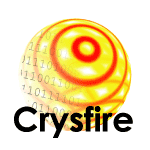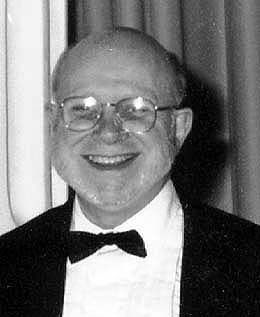
Collaborative Computational Project Number 14
(CCP14)
For Single Crystal and Powder Diffraction
(Freely Available Crystallographic Software for Students and Academia)
 |
Collaborative Computational Project Number 14 (CCP14) For Single Crystal and Powder Diffraction (Freely Available Crystallographic Software for Students and Academia) |
| Home | Downloads | What's New | Contact CCP14 |
February 2020 New version
of Crysfire - Crysfire2020:
|
31st
August 2006 New version
of Crysfire:
|
| Robin Shirley 1941-2005 It is with great sadness that I have to announce that Robin died in hospital on Sunday, 27th March 2005.  Robin Shirley 1941-2005 |
31st
August 2006 New version
of Crysfire:
v9.46.08 Crysfire
2004: What's New? (including Latest enhancements) Crysfire
2000 users will find that the front-end interface largely
remains familiar, but that the new Crysfire is now a close-coupled
system,
faster, more robust and easier to use.
Nothing has been lost and there are several powerful
new
facilities. The
source code for the
command module of Crysfire 2002 is actually four times as large as its
equivalent in Crysfire 2000. All
facilities can now be run directly from the main command menu,
including programs that previously would only run as standalones. Another new feature is
that on restarting
Crysfire in a particular data directory, the most recently used dataset
will
automatically reload. The
online help has been redesigned and extended, supported by a clearer
and more comprehensive manual (twice the size of its predecessor). All documentation for
Crysfire and its
supported indexing programs can now be viewed directly from the
Crysfire
command menu using new VM (View Manual) and VF (View File) commands. Although
Crysfire 2002 will take advantage of the facilities of Windows
when it finds itself running in that environment, it is still
essentially a DOS
suite, designed to run on almost any PC anywhere in the world,
including the
rather basic equipment that may be all that is available to students in
developing
countries. Of
course, since indexing can
be a computationally intensive process, Crysfire will be seen at its
best when
running at GHz speeds on a modern Pentium or Athlon PC, under Windows
95 or
later. Nevertheless, it will still get there eventually on any PC that
meets
its very basic requirements (640K RAM, a 286 or newer x86-family
processor, a
hard disk of some sort, and DOS 5 or later). An
obvious change, and hopefully an improvement, is the new IN (=index)
command, which launches indexing programs directly (including Mmap and
McMaille
- see below), automatically reloading the current dataset on returning
(this
cycle was previously a little clumsy and required several user
commands). All
previous indexing programs continue to be supported (some with
considerable improvements), plus a completely new program Mmap, which
can be
used both for ab initio indexing and for topographical scans of
solution space,
since it generates a visual colour-contoured map of the hills and
valleys of
figure of merit plotted against lattice parameters. A
merit-surface map provides a clearer picture in which the central peak
reveals itself as likely to be a physically correct solution because of
its
narrow and compact cross-section, while others, which are merely
pseudo-solutions,
are more likely to lie on ridges and other extended features in
solution space. The new
M1 and M3 commands display the three principal topographic
sections centred on the currently stored cell.
M1 displays all three together as thumbnails within
a single screen,
while M3 displays three more detailed consecutive full-screen views. A more general MM command
generates
individual maps under more detailed user control.
Mmap's indexing mode can also be accessed
from the IN command. From v9.46 (April 2003), Armel Le
Bail's new McMaille program (v3) is
also supported, in its automated "Black Box" mode. This uses
Monte Carlo search with
profile-based solution-matching (using an idealised profile for greater
speed). A copy of McMaille is included
in the Crysfire distribution – to check whether a later
release is available
see Armel's website. A new LC
(Load Cell) command allows trial solutions to be loaded from
Crysfire or Chekcell summary files to simplify such investigations. Since the next task is
often to assess its
topography maps, a shortcut into the M1/M3 map sequence is provided. Another
new feature is that, during indexing runs, after the summary file
has been displayed, all solutions are run through a system version of
Ton
Spek's Le Page program then redisplayed for comparison in reduced-cell
form. This
highlights the relations
between trial solutions, including those which are actually equivalent,
though
previously found in different settings (and, equally important, those
that are
non-equivalent derivative cells, though their volumes might have
suggested that
they were different settings of the same solution). Also new
is an approximate ab-initio volume estimate which is reported
whenever a dataset is loaded, with a suggested rescale factor if it
seems
likely to be outside the volume range for which most indexing programs
have
been optimised. This
can become
important as SDPD attempts increasingly ambitious structures, even
including
proteins (e.g. a new form of zinc insulin: Von Dreele, 2002). At the
other end of the scale, high-pressure/high-temperature experiments
often unavoidably yield sparse datasets from phases that are not
observable
under ambient conditions, and which contain fewer than the 20 observed
lines
regarded as the absolute minimum by many indexing programs. A new EP
(Extend Pattern) command can automatically extend any sparse
pattern by adding higher orders of observed lines until the total has
been
expanded to 20. While
this obviously
cannot increase the amount of information present, it permits more
programs to
run, providing a broader basis for hypotheses about the cell (or at
least
sub-cell) that is present. Exploratory
indexing work is assisted
(from v9.45.27) by new HO (Higher/Lower Orders Analysis) and ZT (Zone
Transformation) commands, and (from v9.46.01) by enhancements to the CA
command
to allow the exclusion of obs lines that are not indexed within
specified
obs-calc difference limits in 2Theta or Q.
A new PS (Pattern Separation) command can then be
used to save either
the excluded or non-excluded lines to disk as a separate dataset. A new S (Strip low
intensity lines) option
has been added to the ED (Edit) command, to delete lines below a
specified
intensity threshold. Finally,
the logfile has been made considerably more comprehensive, so
that its record now acts more nearly as an automated laboratory
notebook for
indexing work on each dataset name. Summary General
Improvements * Completely
rewritten: faster,
close-coupled, more
robust and easier to use. * Everything
runs directly from the main command menu, including previous standalone
programs. * On
restarting Crysfire, the most recently used dataset will automatically
reload. * Improved
online help, and a clearer and more comprehensive manual. * All
documentation for Crysfire
and supported indexing programs can be viewed directly using new VM
(View
Manual) and VF (View File) commands. * Automatically
takes advantage
of the facilities of Windows and fast modern processors when running in
those
environments. * But
will still run on a very
basic PC anywhere in the world (minimum requirements: 640K RAM, a hard
disk of
some sort and DOS 5 or later). * All
previous indexing programs still supported (some with considerable
improvements). * Better
support for sparse
datasets with less than 20 lines from high-pressure/high-temperature
experiments (including the EP command described below). * A more
comprehensive logfile,
now closer to an automated laboratory notebook for indexing work on
each
dataset. Main New
Features (**
= enhancements since the original release
in August 2002) * New IN
(=index) command, which
launches indexing programs directly, automatically reloading the
current
dataset on returning (this cycle previously required several commands). * A
completely new indexing
program Mmap, both for ab initio indexing (via the IN command) and for
topographical scans of solution space in which it generates a visual
colour-contoured map of the figure of merit surface plotted against
lattice
parameters. ** Armel Le Bail's new
McMaille
whole-profile indexing program (v3) is now supported (from v9.46.04). * New M1
and M3 commands to
display the three principal topographic sections centred on the
currently
stored cell - M1 as three thumbnails within a single screen, M3 as
three more
detailed consecutive full-screen views. * A
general MM command to generate individual merit-maps under more
detailed user
control. * New LC
(Load Cell) command to
load trial solutions from Crysfire or Chekcell summary files (since the
next
task is often to assess its topography maps, a shortcut into the M1/M3
map
sequence is provided). * Reduced-cell
summaries: after
the summary file display in indexing runs, all solutions are run
through a
system version of Ton Spek's Le Page program and redisplayed as a
summary table
in reduced-cell form. * An
approximate ab-initio volume
estimate reported whenever a dataset is loaded, with a suggested
rescale factor
if a large cell seems likely (cf Bob Von Dreele's powder structures of
proteins!). * New EP
(Extend Pattern) command to
automatically extend any sparse pattern by adding higher orders of
observed
lines until the total has been expanded to 20 (this obviously cannot
increase
the amount of information present, but it permits more programs to run) ** An enhanced SC (Self-Calibration)
command,
which now includes histogram displays of 2Theta-zero or
specimen-displacement
corrections, and supports iterative use. ** New HO (Higher/Lower
Orders Analysis) command
to search the observed pattern for possible higher or lower orders
(harmonics)
of each line. ** New ZT (Zone
Transformation) command to double
or centre an hk0 zone prior to use as a basis zone by Mmap. ** Enhancements to the CA
(Calculate Pattern)
command, to exclude unindexed observed lines based on user-specified
limits in
2Theta or Q. ** A new PS (Pattern
Separation) command to save
either the excluded or remaining lines (after CA) to disk as a separate
dataset, and thus help to separate patterns from mixed phases into
their
components. ** New S option in the ED
(Edit) command, to
strip out any observed lines that are below a specified intensity
threshold. ** The DI (Direct
Indexing) command now works
correctly. |
20th
January 2004 new bugfix
version of Crysfire:
|
17th
September 2002 new
bugfix version of Crysfire:
|
15th
September 2002 new
bugfix and feature Version of Crysfire:
Add tutorials on:
|
29th
August 2002 new bugfix
Version of Crysfire:
|
3rd
August 2002 new Crysfire
2002
|
9th
July 2002 new Version of
Crysfire:
|
30th
April 2002 new Version
of Crysfire:
|
22nd
March 2002 new Version
of Crysfire:
|
23rd
August 2001 new Version
of Crysfire:
|
2nd
April 2001 new Version
of Crysfire:
|
17th
December 2000 new
Version of Crysfire:
|
25th
July 2000 updates over
previous version of Crysfire:
|